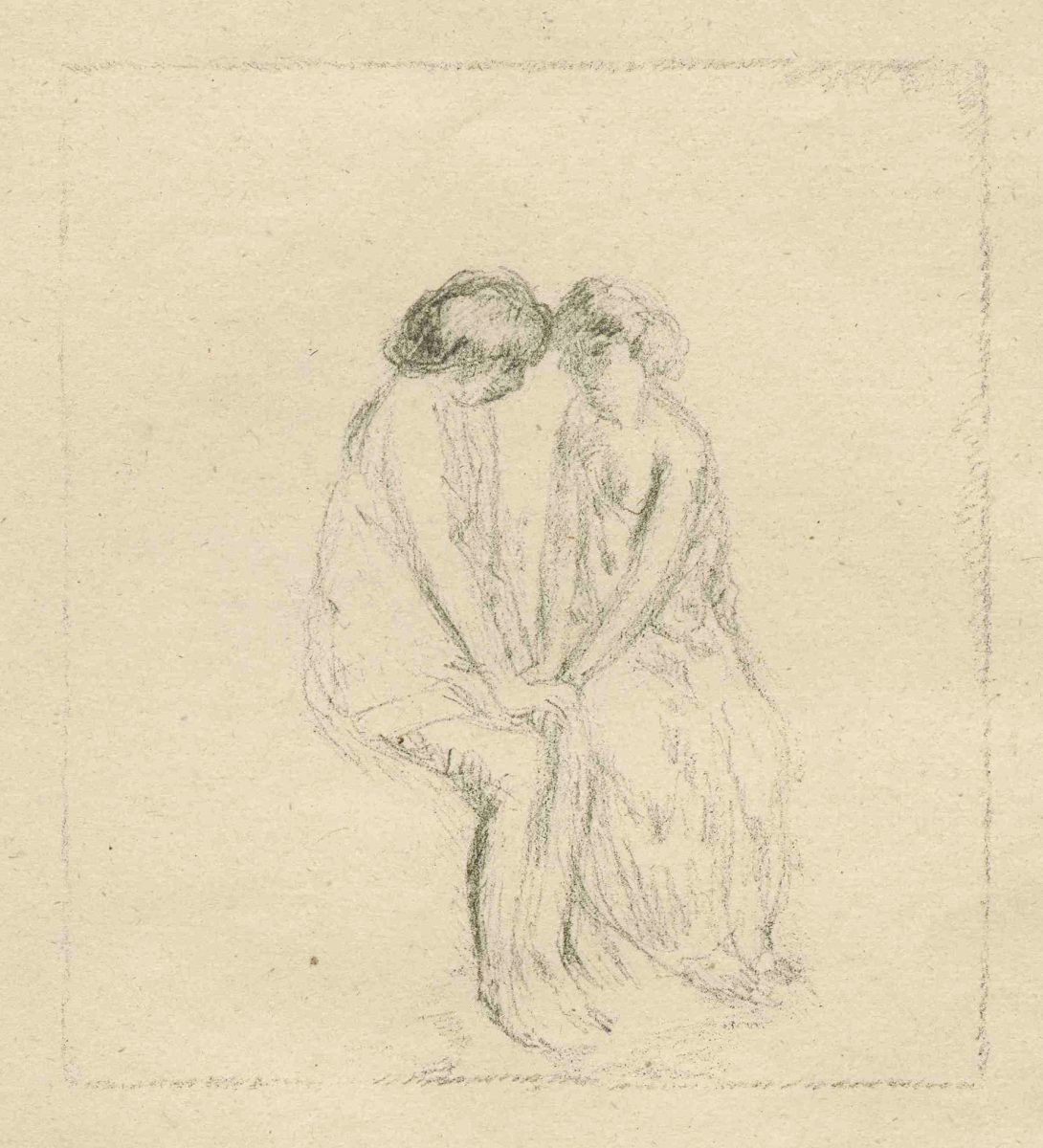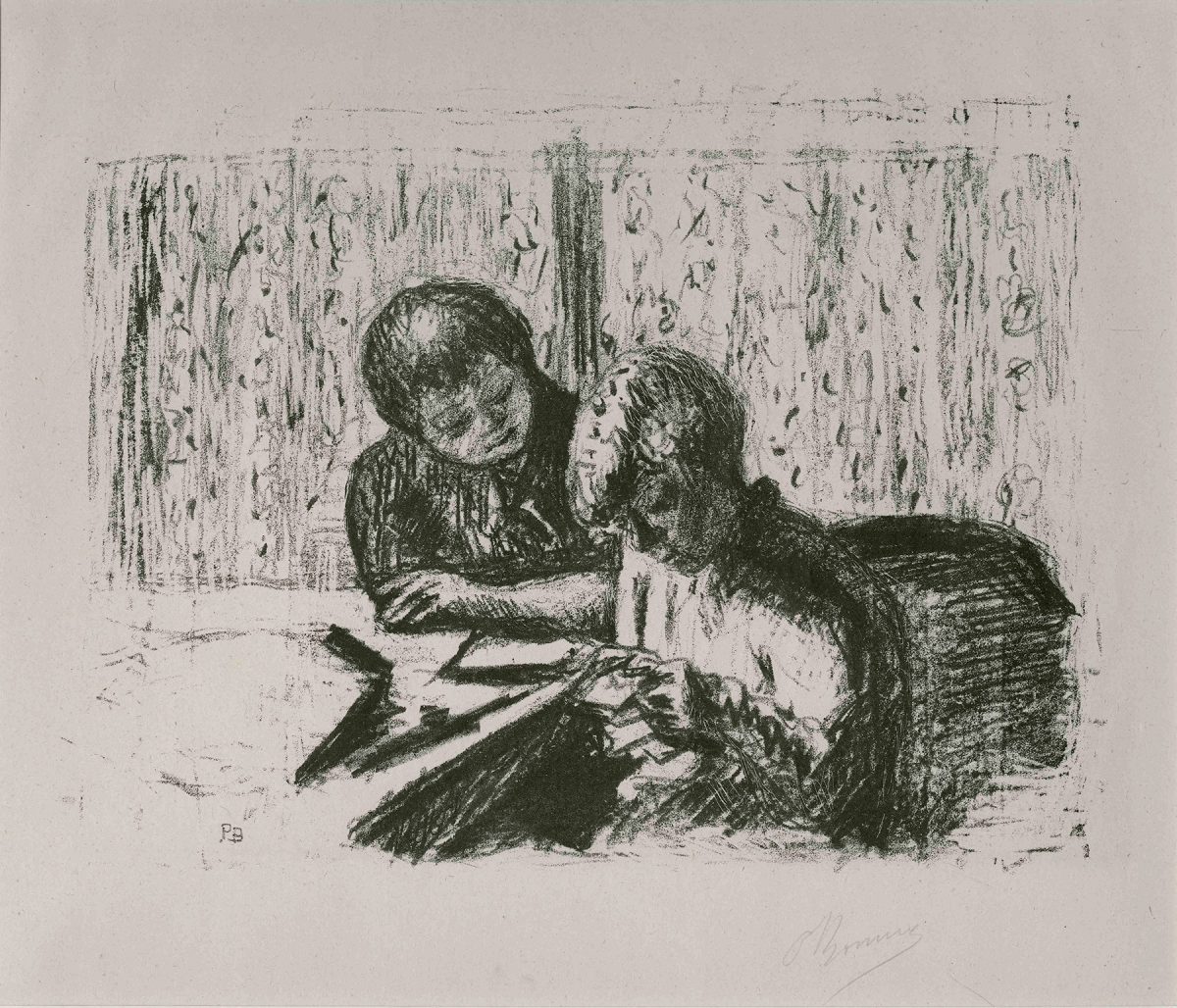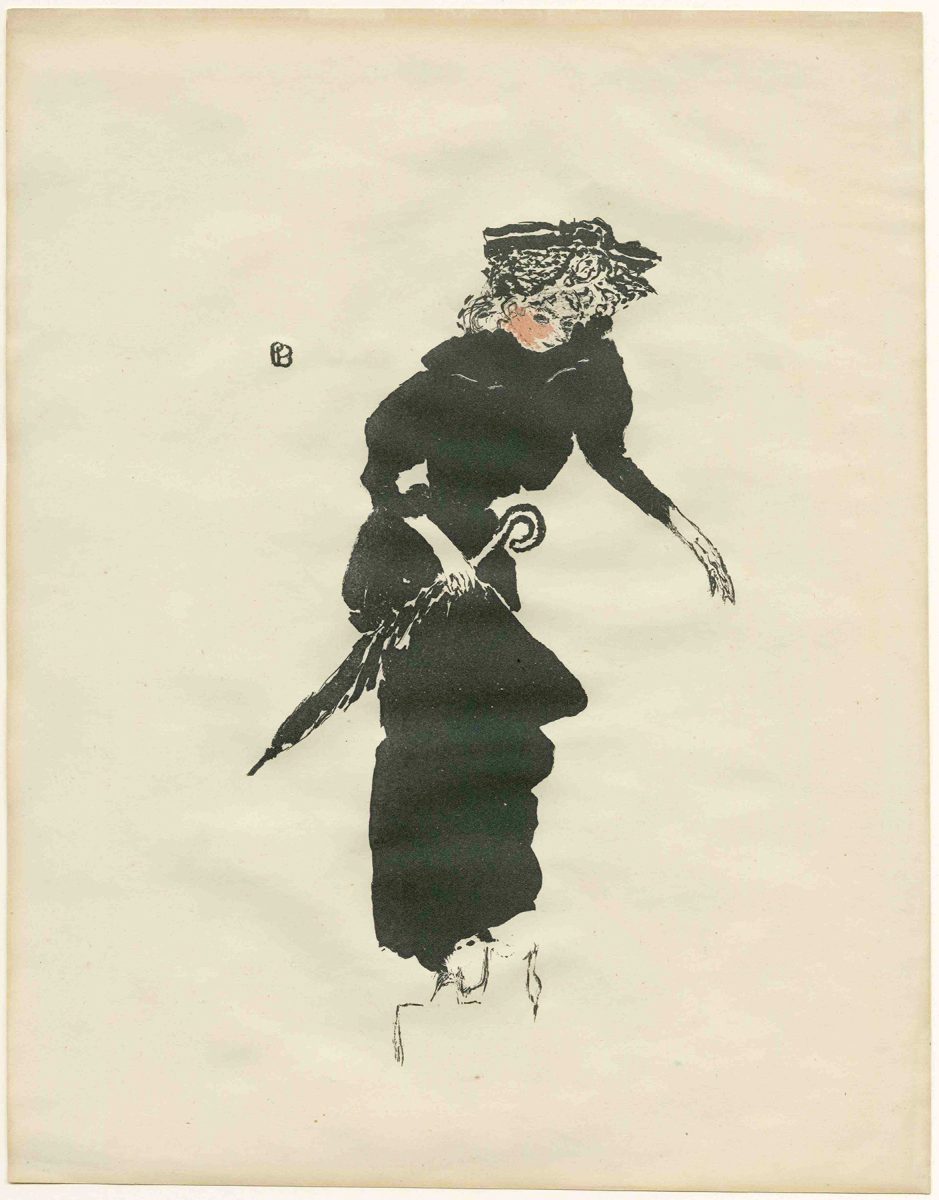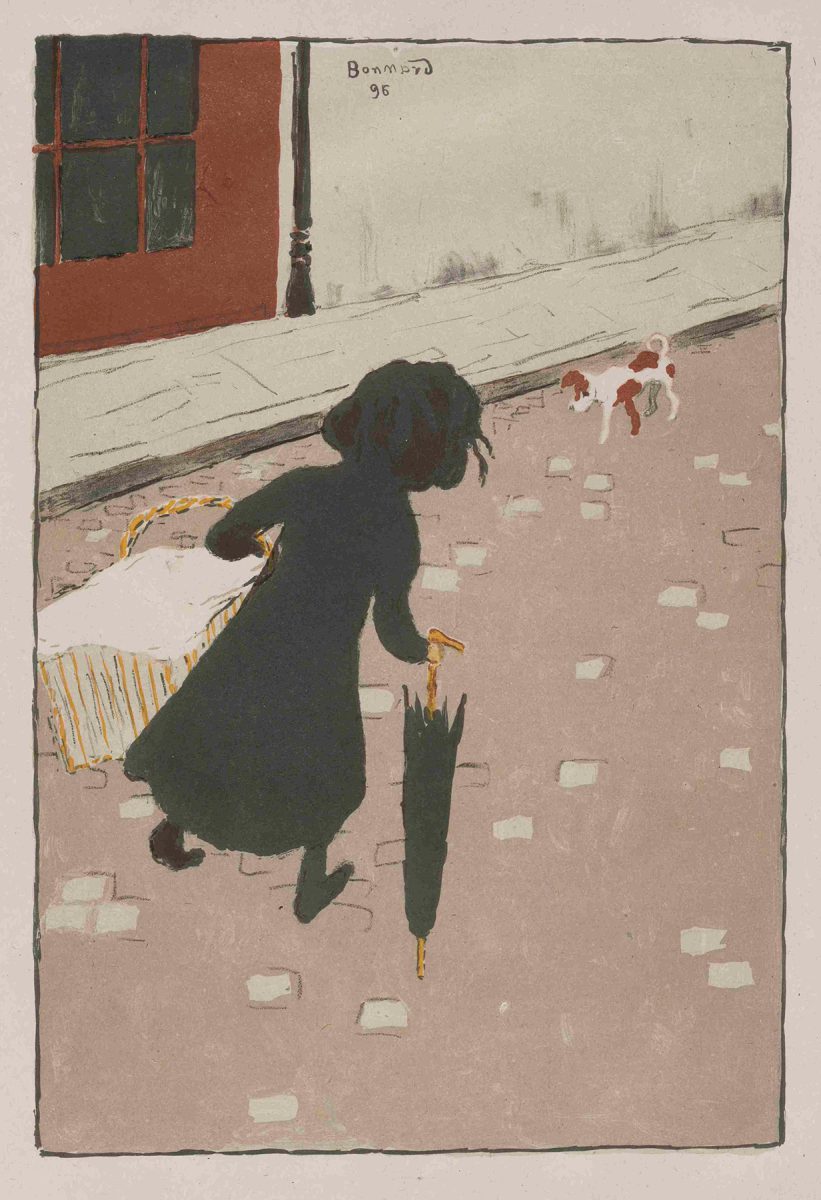The Fondation William Cuendet & Atelier de Saint-Prex owns some 28 works, drawings, lithographs and etchings by the artist, mainly from the estate of Gérard de Palézieux. Palézieux was a great admirer of Bonnard’s draughtsmanship, and he particularly appreciated his illustrations for the edition of Daphnis et Chloé, which Vollard published in 1902 and Henry-Louis Mermod republished in the canton de Vaud in 1948.
Pierre Bonnard, a great master of colour in both painting and graphic art, was born in Fontenay-aux-Roses in 1867. Raised in a bourgeois Parisian family, he developed a keen interest in art from an early age, though he completed a more traditional education with ease, graduating in law in 1888. Around this time, however, his interest in painting led him to classes at the Académie Julian, where he met Édouard Vuillard, Maurice Denis and Paul Sérusier. Bonnard and these fellow artists (along with a few others) would soon form the important avant-garde group known as Les Nabis. Yet it was in the field of graphic design that Bonnard first made a name for himself. His France-Champagne (1891) was the first truly artistic colored poster, and it inspired Toulouse-Lautrec to make his own renowned series of similar designs.
While his early compositions still bore the obvious influence of the Japanese prints that fascinated many young artists at the time, Bonnard gradually detached himself from this influence in his later prints, which were often devoted to intimate subjects or scenes of Parisian life. Encouraged in particular by the famous art dealer Ambroise Vollard, Bonnard began making color lithographs, becoming one of the chief innovators in a medium that was then experiencing a boom in popularity. For example, in 1896, for Vollard’s first Album des peintres-graveurs (Album of painter-printers), Bonnard produced La petite blanchisseuse (The Little Laundry Girl), which has emerged as one of the most emblematic prints of the period.
Bonnard’s collaboration with Vollard continued with his second album (1897), for which Bonnard designed the cover, and then with Bonnard’s collection of twelve lithographs titled Quelques sujets de la vie parisienne (Some subjects of Parisian life) (1899). In these plates, which show great daring in their composition and colour, Bonnard presents the architecture of Paris, thronging crowds, and his own fleeting impressions. Although painting now occupied most of his time, Bonnard would never completely turn his back on lithography. He ultimately illustrated a number of literary works for projects published by Vollard, including Verlaine's famous Parallèlement, the ancient novel Daphnis et Chloé and Octave Mirbeau's Dingo.




